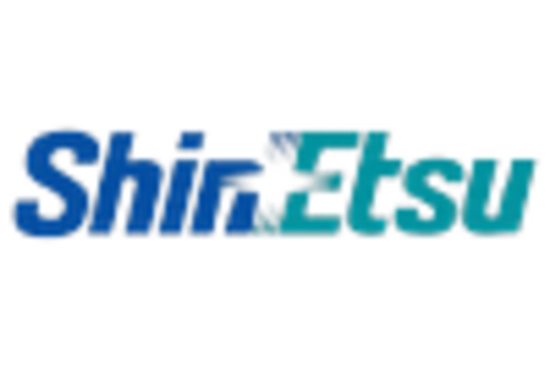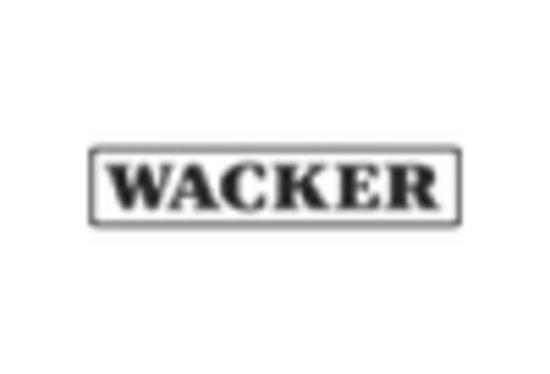Market Trends
Introduction
As we enter 2024, the silicone elastomers market is expected to undergo a major transformation, driven by a confluence of macroeconomic factors, such as rapid technological developments, increasing regulatory pressures, and changing consumer habits. A series of innovations in both the manufacturing process and product formulations have enhanced the performance and versatility of these materials, making them increasingly indispensable in a range of end-use industries, such as the automobile, the medical device, and the electrical and electronics industries. But the rising tide of green regulations is also influencing product development and market dynamics. And finally, a change in consumer preferences towards materials with higher performance and greener credentials is also changing the pattern of demand. For industry players, it is crucial to understand these trends, which not only point to emerging opportunities, but also require strategic adjustments in a highly competitive marketplace.
Top Trends
-
Sustainability Initiatives
Towards a sustainable material market, the silicone rubber industry is being transformed. In particular, major companies are investing in bio-based alternatives to silicone rubber in response to regulatory requirements to reduce carbon emissions. In a survey, 70 per cent of manufacturers said that they are prioritizing sustainable development in their product development. This trend is likely to lead to an increase in R&D on greener technology and materials. -
Advancements in Medical Applications
The biocompatibility of silicone rubber makes it increasingly used in the medical field, particularly in the manufacture of surgical instruments and in the manufacture of medical appliances and surgical appliances. This market is growing by an average of 30 per cent each year. This trend is expected to continue and to lead to further regulatory approvals and innovations in medical technology. -
Smart Materials Integration
With the increasing importance of the use of silicon rubbers as elastomers, the integration of active components in the elastomers is gaining ground, mainly for the manufacture of sensors and actuators. Industry leaders are working on silicon rubbers that react to the environment and thus increase the functionality. According to reports, smart materials will account for up to 15% of the silicon elastomer market by 2025, indicating a shift towards smarter products. -
Increased Use in Automotive Applications
In the field of automobiles, silicone elastomers are more and more used for their toughness and heat resistance, especially in electric vehicles. The use of these materials for gaskets and seals has increased by 25 per cent in the past year. The trend is expected to continue as the automobile industry moves towards more efficient and sustainable materials. -
Customization and Tailored Solutions
There is a growing demand for tailored silicone elastomer solutions for industry-related applications. 40% of clients are now looking for bespoke products. This trend will increase customer satisfaction and promote long-term relationships between suppliers and their clients. -
Regulatory Compliance and Safety Standards
In the food and medical fields, tighter regulations are influencing the market for silicon rubbers. And companies are investing in safety measures. About 60% of manufacturers report higher costs for compliance. This trend will be accompanied by innovations in safer formulations and manufacturing processes. -
Expansion in Emerging Markets
The emerging countries are a major consumer of silicon rubbers, driven by their industrial development and the development of their road and rail network. In Asia-Pacific, where the demand for silicon rubber has risen by 20 per cent in recent years, companies are expanding their operations. This trend is likely to result in increased competition and more investment in local production capacity. -
Digital Transformation in Manufacturing
The industry of silicon rubber is undergoing a digital revolution, with the onset of Industry 4.0. The production process is being reorganized with automation and data analysis. The increase in the efficiency of the production process has been calculated at 15 percent. The reorganization of the supply chain is expected to bring about a reduction in the cost of production. -
Focus on High-Performance Materials
There is a growing emphasis on high-performance silicon rubbers which are able to withstand extreme conditions. The demand for these special materials is being driven by the aviation and oil and gas industries, and the high-performance product lines have increased by 10%. This trend is expected to lead to further innovations and new formulations to meet the increasingly stringent industry standards. -
Collaboration and Partnerships
Strategic collaborations between manufacturers of silicon rubber and technology companies are growing, aiming to improve product offerings. The most recent figures indicate that about one-quarter of companies have been involved in new collaborations in the past year. This trend is expected to accelerate innovation and market responsiveness.
Conclusion: Navigating the Silicone Elastomers Landscape
The competition in the field of silicone elastomers is very strong and highly fragmented, with both old and new players vying for market share. Regional trends point to a growing demand in Asia-Pacific and North America, which has forced suppliers to reorientate their strategies. The leading companies are relying on their established supply chains and brand awareness, while the new entrants are concentrating on innovation and a sustainable approach to carve out their niches. The companies’ future success will depend on their ability to respond rapidly to changing customer needs and regulatory demands. Suppliers need to make the most of these opportunities to increase their operational efficiency and secure sustainable growth in this dynamic market.
















Leave a Comment